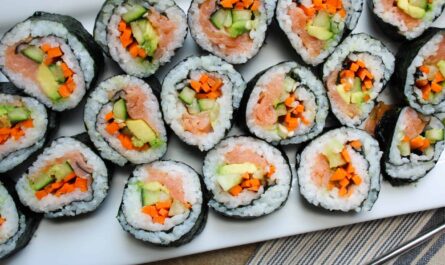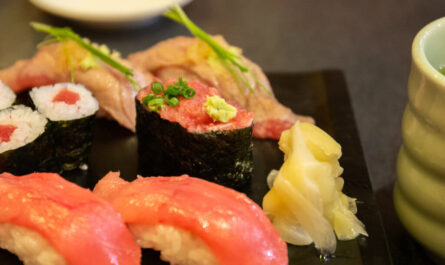If you’re wondering about how to cook Matta rice without a pressure cooker, you’ve come to the right place. Matta rice, also known as Kerala red rice, is a staple in South India, cherished for its unique flavor and firm texture. Unlike regular white rice, Matta rice requires a longer cooking time, but the results are worth every effort. In this comprehensive guide, we will explore the traditional methods to cook Matta rice, ensuring you relish its authentic taste, even without using a pressure cooker.

Understanding Matta Rice: A Brief Overview
Before we delve into the cooking process, let’s first understand what makes Matta rice stand out. This rice variety is unpolished, retaining its bran layer, which gives it a reddish-brown hue. The bran not only imparts a distinct earthy flavor but also makes Matta rice nutritionally superior, rich in fiber and nutrients. Its coarse texture requires specific cooking techniques to ensure it cooks evenly while maintaining its natural aroma.
The Importance of Soaking Matta Rice
Preparing Matta rice begins with proper soaking. This step is crucial as it softens the rice’s outer layer, reducing the cooking time significantly. Ideally, you should soak Matta rice in water for at least 30 minutes, but if time permits, soaking it for an hour or more is recommended. This simple step helps in achieving a uniform texture, making the grains fluffy and each grain distinct.
Ingredients You’ll Need
- 1 cup Matta rice
- 3 cups water
- Salt, to taste
Step-by-Step Guide to Cook Matta Rice Without a Pressure Cooker
Let’s explore the step-by-step process to cook Matta rice using a regular pot:
Step 1: Rinsing the Rice
Begin by rinsing the rice under running water. Gently swirl the rice with your fingers to remove dirt or excess starch. Rinsing is vital for Matta rice to avoid any unwanted stickiness and promotes a clean flavor. Repeat the rinsing process until the water runs clear.
Step 2: Boiling the Water
In a large pot, bring 3 cups of water to a rolling boil. The proportion of water depends on personal preference and desired texture, but generally, a 1:3 rice to water ratio works well for Matta rice.
Step 3: Adding the Rice
Once the water reaches a vigorous boil, add the rinsed and pre-soaked Matta rice to the pot. Give it a gentle stir to prevent the grains from sticking to the bottom. Adjust the burner to maintain a steady simmer.
Step 4: Simmering the Rice
Cover the pot with a lid, leaving a small vent for steam to escape, and reduce the heat to low. Allow the rice to simmer, undisturbed, for approximately 45 to 50 minutes. The key to perfect Matta rice is patience; avoid frequently lifting the lid, as escaping steam extends the cooking process.
Step 5: Checking the Doneness
After the recommended cooking time, check if the rice has absorbed all the water. If the rice appears cooked but there’s residual water, simply drain it off. If additional cooking is needed, cover and continue simmering until the grains are cooked through but retain a firm bite.
Step 6: Resting the Rice
Once cooked, turn off the heat and let the rice rest, covered, for another 10 minutes. This resting period allows the moisture to redistribute, enhancing the rice’s texture and flavor. Once rested, fluff the rice gently with a fork and season with salt as per your taste.

Serving Suggestions and Storage Tips
Matta rice is delicious on its own but pairs exquisitely with traditional South Indian curries and dishes like Sambar, Rasam, or Avial. It also complements non-vegetarian dishes such as chicken curry or beef fry. Due to its robust texture, Matta rice holds up well in recipes like rice salads or cold rice dishes, making it versatile for various culinary creations.
If you have leftovers, store them in an airtight container in the refrigerator. Reheat with a splash of water to bring back its texture. Matta rice, when refrigerated properly, can last up to 3 days, retaining its flavors and quality.
Why Choose Matta Rice Over Other Varieties?
Choosing Matta rice over other varieties offers several nutritional benefits. Its high dietary fiber content promotes digestion and helps in controlling blood sugar levels. It’s a preferred choice for those seeking healthy alternatives, as it’s packed with vitamins, minerals, and antioxidants essential for a balanced diet. The unique flavor profile makes it a popular choice for rice enthusiasts around the world.
If you’re curious about alternate ways of making rice without a pressure cooker, check out our other detailed guides here or explore delicious recipes that embrace traditional cooking methods here.
For further culinary explorations and more recipes about cooking without traditional methods, visit our detailed articles on green beans and chicken and rice, providing alternative techniques suited for home cooks who cherish the cooking process.
This article contains affiliate links. We may earn a commission at no extra cost to you.




